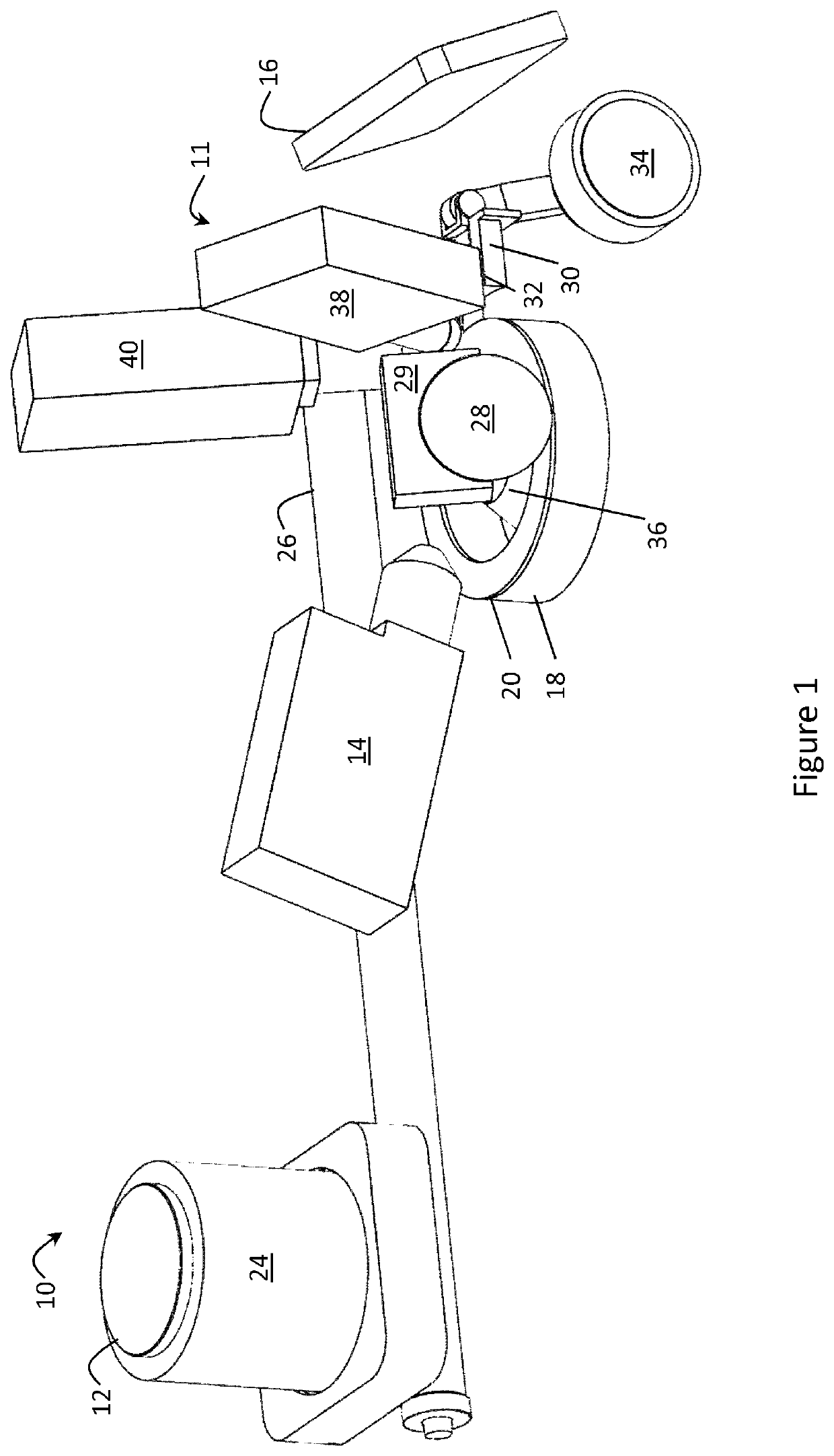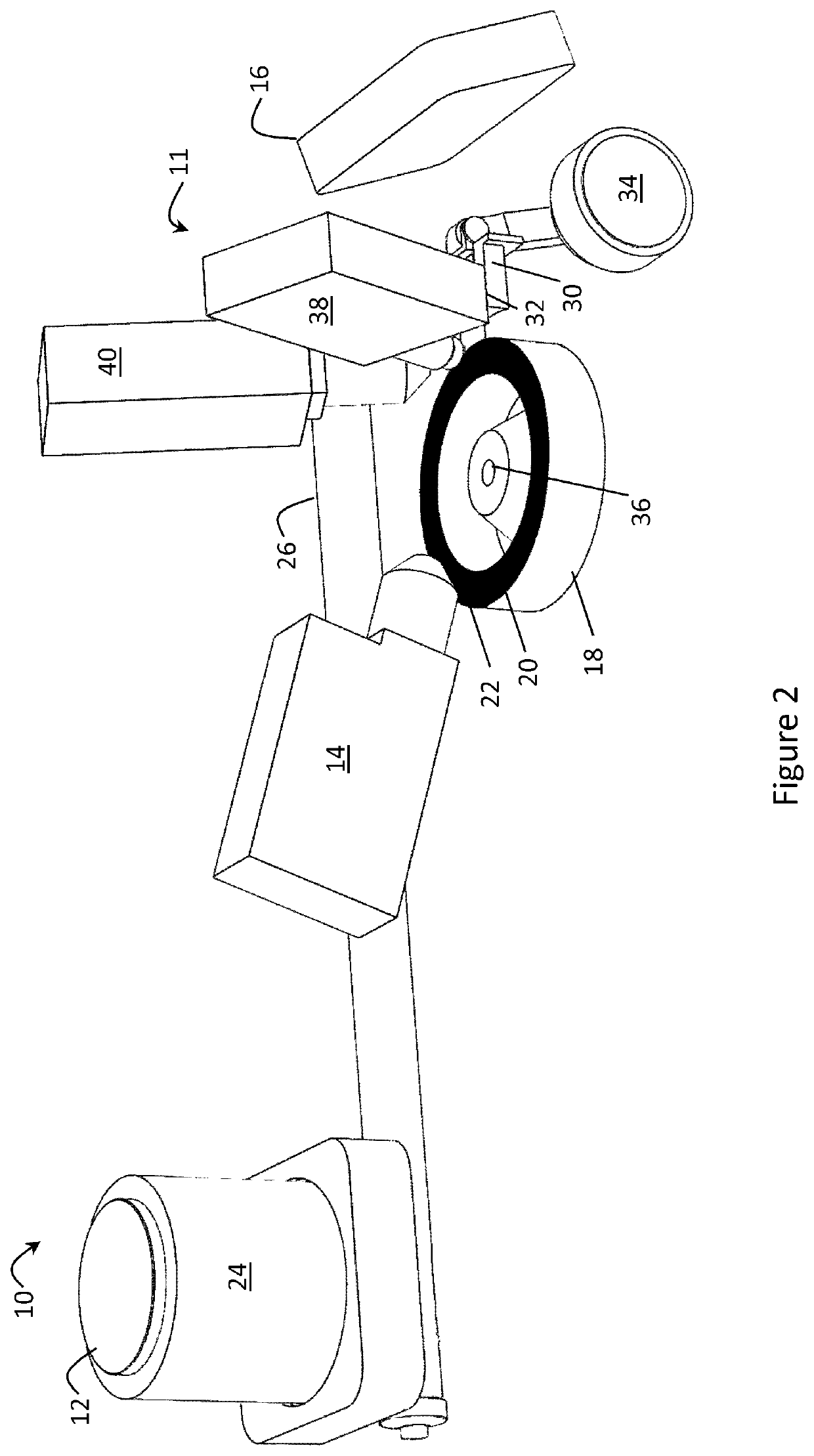Method and apparatus for analysing particulate material
a technology of particulate material and method, applied in the direction of sampling, instruments, measurement devices, etc., can solve the problems of inability to accurately analyse, affect the usefulness of results for certain applications, and change in the material affecting the analysis, etc., to achieve accurate results, increase the volume of samples, and poor analysis conditions
- Summary
- Abstract
- Description
- Claims
- Application Information
AI Technical Summary
Benefits of technology
Problems solved by technology
Method used
Image
Examples
Embodiment Construction
[0041]According to an embodiment there is provided an apparatus 10 for analysing particulate material having crystalline substances as shown in FIG. 1. The material to be analysed is extracted from particulate material in the form of, for example, cement product from a cement mill or cement clinker from a kiln. The material to be analysed is in dry powder form and, as mentioned above, could alternatively be an ore, a mineral process intermediary or residue, etc. In the embodiment, the particulate material also has amorphous and poorly crystalline substances, such as one or more of opaline silica, iron oxy hydroxides, components in fly ash and blast-furnace slag.
[0042]In use of the apparatus 10 shown in the Figures, a user extracts a sample of particulate material be analysed, from say a stream of cement clinker particulate, and provides it to a grinder 12 of the apparatus 10. The grinder 12 receives the sample and grinds it into a powdered material having a designated particle size....
PUM
| Property | Measurement | Unit |
|---|---|---|
| particle size | aaaaa | aaaaa |
| diameter | aaaaa | aaaaa |
| particle size | aaaaa | aaaaa |
Abstract
Description
Claims
Application Information
 Login to View More
Login to View More - R&D
- Intellectual Property
- Life Sciences
- Materials
- Tech Scout
- Unparalleled Data Quality
- Higher Quality Content
- 60% Fewer Hallucinations
Browse by: Latest US Patents, China's latest patents, Technical Efficacy Thesaurus, Application Domain, Technology Topic, Popular Technical Reports.
© 2025 PatSnap. All rights reserved.Legal|Privacy policy|Modern Slavery Act Transparency Statement|Sitemap|About US| Contact US: help@patsnap.com



